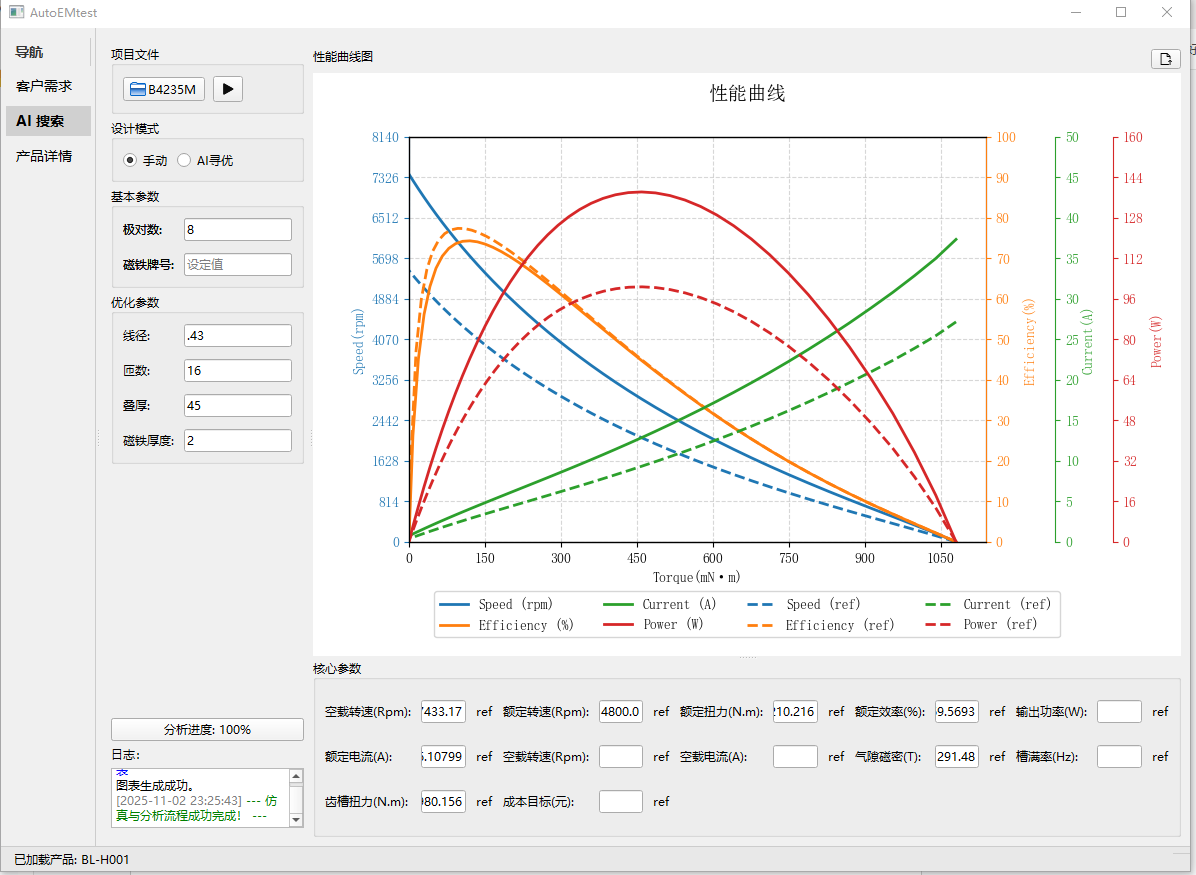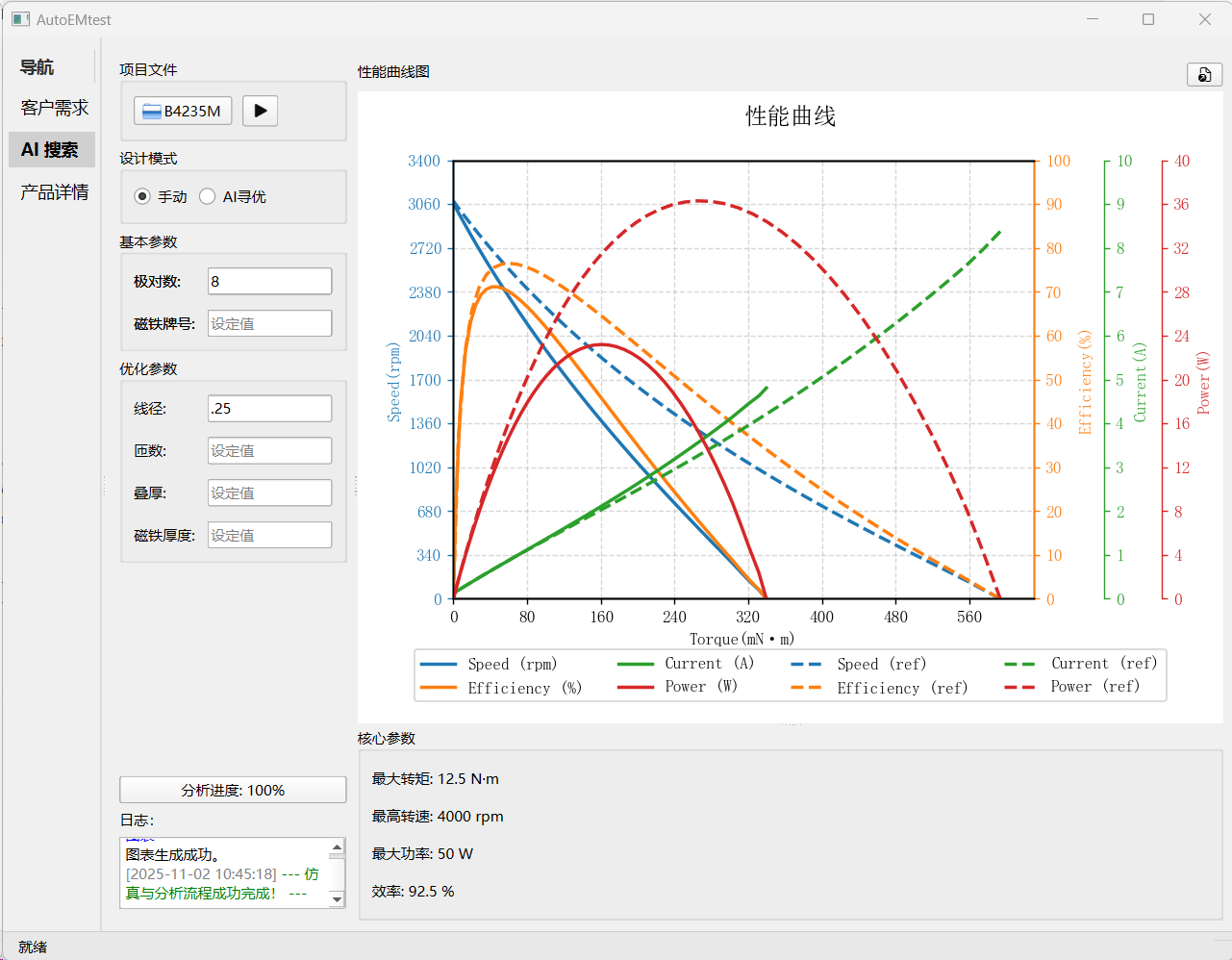第一次会面
黄仁勋:嘿,Joe。
乔·罗根:很高兴再次见到你。我们刚才还在聊——这是我们第一次说话,还是我们在SpaceX那是第一次?
黄仁勋:是在SpaceX。
乔·罗根:SpaceX。那是第一次,当时你正把那个疯狂的AI芯片交给马斯克。
黄仁勋:对吧?DGXSpark。
乔·罗根:是的。
黄仁勋:噢,那是——
乔·罗根:那是一个大时刻。
黄仁勋:那是一个巨大的时刻。
乔·罗根:在那里的感觉太疯狂了。就像看着这些科技巫师在交换信息,然后你交给他这个疯狂的设备,你知道吗?然后另一次是我在我家后院射箭,突然接到特朗普的电话,他正和你在一起。
黄仁勋:特朗普总统打电话来,然后我给你打了电话。是的。我们当时正好聊到你。他在谈论他要在白宫前院举办的UFC比赛。
乔·罗根:是的。
黄仁勋:他拿出来,说:“Jensen,看这个设计。”他非常自豪。我说:“你要在白宫草坪上举办格斗赛?”他说:“是啊,是啊,你要来。这会很棒的。”他给我看他的设计,说它有多漂亮,然后——不知怎么就提到了你的名字。他说:“你认识Joe吗?”我说:“认识,我要去上他的播客。”他说:“咱们给他打个电话。”
乔·罗根:他就像个孩子。
黄仁勋:我知道。咱们给他打电话。
乔·罗根:他就像个79岁的——
黄仁勋:他太不可思议了。
特朗普独特的总统风格
乔·罗根:是的,他是个奇怪的人。非常与众不同,你知道,和你对他期望的不一样。与人们对他的看法非常不同。作为总统也非常不同。一个会突然给你打电话或发短信的家伙。而且,当他发短信给你时——你用的是安卓手机,所以你看不到这个效果——但在我的iPhone上,他会让字体变大。
黄仁勋:是吗?是这样吗?
乔·罗根:“美国再次受人尊敬了”,就像——全大写,而且会让字体放大。有点荒谬。
黄仁勋:嗯,一对一相处时,特朗普总统非常不同。他让我很惊讶。首先,他是一个极好的倾听者。几乎我对他说的每一件事,他都记住了。
乔·罗根:是的,人们不——他们只想看关于他的负面故事或负面叙述。你知道,任何人都可能有糟糕的一天。比如,他做的很多事情我觉得他不应该做。比如,我觉得他不应该对记者说“安静,小猪(Quiet,piggy)”。那太荒谬了。虽然客观上确实好笑。我的意思是,那发生在她身上很不幸。我不希望这种事发生在她身上。但这确实好笑。总统做这种事太荒谬了。我希望他没那么做。但除此之外,他是个有趣的人。就像他是很多不同特质的集合体。
黄仁勋:你知道,他魅力的一部分——或者说他天才的一部分是——是的,他心直口快。
乔·罗根:是的。这在很多方面就像是一个反政客的人。
黄仁勋:没错。所以,你知道,他心里想什么就说什么。人们更喜欢这样。我也喜欢。
乔·罗根:有些人。有些人宁愿被骗。
黄仁勋:是的。但我喜欢他告诉我他心里的想法。几乎每次他解释事情,或者说什么,他都以他对美国的热爱、他想为美国做什么作为开场。他思考的每件事都非常务实,非常符合常识。而且,你知道,非常合乎逻辑。
我还记得我第一次见他的时候。那是——我不认识他,以前没见过他。商务部长卢特尼克打电话来,我们在政府刚开始的时候见过面。他告诉我什么对特朗普总统很重要——就是美国要在本土进行制造业。这对他来说真的很重要,因为这对国家安全很重要。他想确保我们国家重要的关键技术是在美国制造的,我们要重新工业化,重新擅长制造业,因为这对就业很重要。
乔·罗根:这听起来就像是常识。对吧?
制造业与国家安全
黄仁勋:极好的常识。这实际上是我与卢特尼克秘书的第一次对话,他当时说——他开场就说:“Jensen,我是卢特尼克。我只想让你知道,你是国家宝藏。NVIDIA是国家宝藏。无论何时你需要联系总统或政府,你就打给我们。我们随时为你服务。”
乔·罗根:这话挺好听的。
黄仁勋:确实如此。这完全是真的。每一次我打电话,如果我需要什么,或者我想倾诉什么,表达一些担忧。他们总是随时待命。不可思议。
乔·罗根:只是不幸的是,我们生活在一个政治如此两极分化的社会,以至于如果常识性的好建议来自你反对的人,你就无法认可它。我认为这就是这里发生的情况。我认为作为一个国家的大多数人,你知道,作为一个巨大的社区——我们在美国拥有制造业是合情合理的,特别是你所说的关键技术。我们从其他国家购买这么多技术,这有点疯狂。
黄仁勋:如果美国不增长,我们就不会有繁荣。我们无法投资任何东西,无论是国内还是其他方面。我们无法解决任何问题。如果我们没有能源增长,我们就无法有工业增长。如果我们没有工业增长,我们就无法有就业增长。就这么简单。对吧?他上任后说的第一件事就是“钻探吧,宝贝,钻探吧(Drill,baby,drill)”——他的观点是,我们需要能源增长。没有能源增长,我们就没有工业增长。我得直白地告诉你,如果不是他的促增长能源政策,我们就无法建立AI工厂,无法建立芯片工厂,肯定也无法建立超级计算机工厂。那些东西都不可能实现。
如果没有这些,建筑工作就会面临挑战。对。电气、电工工作,所有这些现在蓬勃发展的工作都会受到挑战。所以我认为他是对的。我们需要能源增长。我们想要美国重新工业化。我们需要回归制造业。
并不是每个成功人士都需要有博士学位。并不是每个成功人士都必须上过斯坦福或麻省理工。我认为,那种认知是完全正确的。
AI技术竞赛
乔·罗根:现在当我们谈论技术增长和能源增长时,很多人会说,“噢不,那不是我们需要。我们需要简化生活,回归过去。”但真正的问题是,我们正处于一场巨大的技术竞赛中。无论人们是否意识到,无论他们是否喜欢,这正在发生。这是一场非常重要的比赛,因为无论谁先到达人工智能的“事件视界(eventhorizon)”,谁先到达那里,谁就会以巨大的方式拥有巨大的优势。你同意吗?
黄仁勋:嗯,首先,我要说我们确实处于技术竞赛中,而且我们一直处于技术竞赛中。
乔·罗根:对吧?
黄仁勋:对。自工业革命以来,我们就一直与某人进行技术竞赛。
乔·罗根:自曼哈顿计划以来,我们就一直在技术竞赛中。
黄仁勋:是的。或者,你知道,甚至可以追溯到能源的发现。英国是工业革命——如果你愿意这么说——被发明的地方。当他们意识到可以将蒸汽等转化为能源,转化为电力时。所有这些很大程度上是在欧洲发明的,而美国利用了它。我们是从中学习的人。我们将其工业化。我们比欧洲任何人都更快地普及了它。他们都陷入了关于政策、工作和颠覆的讨论中。与此同时,美国正在形成。我们只是拿了技术就跑。
所以我认为我们一直处于某种技术竞赛中。二战是一场技术竞赛。曼哈顿计划是一场技术竞赛。冷战期间我们一直在技术竞赛中。我认为我们现在仍处于技术竞赛中。这可能是最重要的一场竞赛。技术赋予你超能力。无论是信息超能力、能源超能力还是军事超能力,都建立在技术之上。所以技术领先地位非常重要。
乔·罗根:问题在于如果别人拥有更优越的技术。
黄仁勋:对。
乔·罗根:这就是问题所在。关于AI竞赛,人们似乎对此非常紧张。比如,马斯克曾说过,有80%的机会它会很棒,20%的机会我们会陷入困境。人们担心那20%,这是有道理的。如果你有一把左轮手枪,里面有10发子弹,你拿出了8发,里面还有2发,你转动弹巢,当你扣动扳机时你不会感到舒服。这很可怕。当我们朝着AI的终极目标努力时,很难想象先到达那里不符合国家安全利益。
黄仁勋:我们应该(先到达)。问题是,“那里”有什么?
乔·罗根:那里有什么?
黄仁勋:是的。我不确定。我不认为任何人真的知道。
乔·罗根:这太疯狂了。如果我问你——你是NVIDIA的负责人,你都不知道那里有什么。谁知道呢?
AI发展的未来
黄仁勋:是的,我认为它可能会比我们要渐进得多。不会是一个瞬间。不会是某个人突然到达了而其他人没有。我不认为会是那样。我认为这就像技术一样,事情会变得越来越好,越来越好。
乔·罗根:所以你对未来持乐观态度。你显然对AI将发生的事情非常乐观。你们会制造世界上最好的AI芯片吗?
黄仁勋:最好是这样,如果历史可以作为指导的话。我们总是担心新技术。人类总是担心新技术,总有人在思考——总有很多人非常担心。如果历史可以作为指导,事实是所有的担忧都会转化为让技术更安全。
举个例子,在过去的几年里,我想说AI技术,仅在过去两年里可能增长了100倍。我们给它一个数字。好吧?就像两年前的一辆车慢了100倍。所以今天的AI能力强了100倍。
现在,我们如何引导这种技术?我们如何引导所有的力量?我们将其导向让AI能够思考,意味着它可以接受我们给它的问题,逐步分解。它在回答之前会做研究,所以它基于事实。它会反思那个答案。问自己,“这是我能给出的最好答案吗?我对这个答案确定吗?”如果它对答案不确定或没有高度自信,它会回去做更多的研究。它甚至可能使用工具,因为那个工具提供的解决方案比它自己产生幻觉要好。结果是,我们利用了所有的计算能力,将其导向产生更安全的结果、更安全的答案、更真实的答案。
因为正如你所知,最初对AI最大的批评之一就是它会产生幻觉,对吧?如果你看今天人们为什么如此频繁地使用AI,是因为幻觉的数量减少了。你知道,我几乎——好吧,我这次来的整个旅程都在用它。所以我认为这种能力——大多数人想到的是力量。他们想到的可能是爆炸力,但技术力量,大部分都被导向了安全。今天的汽车更强大,但也更安全。很多动力都用于更好的操控。你知道,如果是你,你有一辆1000马力的卡车。我觉得500马力就很好了。不,1000更好。我觉得1000更好。
乔·罗根:我不知道是不是更好,但肯定更快。
黄仁勋:是的,不,我觉得更好。你可以更快地脱离麻烦。我更喜欢我的(法拉利)599而不是612。我觉得它更好。马力越大越好。我的459比430好。马力越大越好。我认为这是更好的操控,更好的控制。
在技术方面,情况也很相似。所以如果你看我们在AI的下一个1000倍性能中要做什么,很多将被导向更多的反思、更多的研究。更深入地思考答案。
乔·罗根:所以当你定义安全时,你定义的是准确性、功能性?
黄仁勋:功能性,好的。它做你期望它做的事。然后你把所有的技术和马力加上护栏。就像我们的汽车一样。今天的汽车里有很多技术。很多都用于,例如ABS(防抱死系统)。ABS很棒。牵引力控制,那太棒了。如果没有车里的电脑,你怎么做这些?
乔·罗根:对吧?
黄仁勋:那个小电脑,你车里做牵引力控制的电脑比阿波罗11号上的电脑还要强大。所以你想要那种技术,将其导向安全,导向功能性。所以当人们谈论力量,技术的进步时,通常我觉得他们想的和我们实际做的非常不同。
乔·罗根:你觉得他们在想什么?
黄仁勋:嗯,他们可能觉得这个AI变得很强大,他们的脑海里可能浮现出科幻电影。对力量的定义,通常是军事力量或物理力量。但在技术力量的情况下,当我们转化所有这些运算时,它是朝着更精致的思考发展的。更多的反思,更多的规划,更多的选择。
军事应用与国防技术
乔·罗根:我认为人们的一大恐惧是军事应用。这确实是一个大恐惧。因为人们非常担心你会拥有基于实现目标而非基于道德或伦理做出决定的AI系统。
黄仁勋:嗯,我很高兴我们的军队将使用AI技术进行防御,我也很高兴Anduril(Palmer Luckey的公司)正在制造军事技术。我很高兴看到所有这些科技初创公司现在将他们的技术能力导向国防和军事应用。我认为你需要这样做。
乔·罗根:我们在播客上请过Palmer Luckey,他展示了他那个不可思议的头盔,还展示了一些视频,你可以看到墙后的东西之类的。太疯狂了。
黄仁勋:他实际上是创办那家公司的完美人选。
乔·罗根:100%。是的,100%。就像他为此而生。他是个怪才。
黄仁勋:太棒了。
乔·罗根:他很棒。但你也需要这种非凡的智力投入到那个非常奇怪的领域中。
黄仁勋:我想我很高兴我们正在让这变得更被社会接受。曾经有一段时间,当有人想将他们的技术能力和智慧投入到国防技术时,不知何故他们会被妖魔化。但我们需要那样的人。我们需要喜欢那种技术应用的人。
乔·罗根:嗯,人们害怕战争。
黄仁勋:嗯,避免战争的最好方法就是拥有过剩的军事力量。
乔·罗根:你认为那是绝对最好的方法吗?不是外交,不是协商解决?
黄仁勋:所有的。所有的方法。
乔·罗根:你必须拥有军事力量才能让人坐下来谈,对吧?
黄仁勋:没错。所有的。
乔·罗根:否则他们就会直接入侵。
黄仁勋:没错。为什么要请求许可?就像你说的,历史。回去看看历史。
AI的未来:最佳情况
乔·罗根:当你看AI的未来,你说没人真的知道会发生什么,你有没有坐下来思考过各种场景?你认为未来二十年AI的最佳情况是什么?
黄仁勋:最佳情况是AI渗透到我们做的每件事中,我们的一切都更有效率。但战争的威胁仍然是战争的威胁。网络安全仍然是一个超级困难的挑战。有人会试图破坏你的安全。你将有成千上万个AI代理保护你免受这种威胁。你的技术会变得更好。他们的技术也会变得更好。就像网络安全一样。就在我们说话的时候,我们看到全球各地的网络攻击几乎在每一个你能想象的前门发生。然而你和我坐在这里谈话。原因是我们在防御方面拥有大量的网络安全技术。所以我们必须不断加强它。不断提升。
网络安全与加密挑战
乔·罗根:人们的一个大问题是担心技术会发展到加密变得过时的地步。加密将不再能保护数据,不再能保护系统。你预计这会成为一个问题吗,还是说随着威胁的增长,防御也会增长,如此循环往复,他们总能抵御入侵?
黄仁勋:不会永远这样。有些入侵会成功,然后大家都会从中吸取教训。网络安全之所以有效,是因为防御技术在飞速进步,进攻技术也在飞速进步。然而,网络安全防御的好处在于,在社会层面上,社区、我们所有的公司都在作为一个整体合作。大多数人没有意识到这一点。有一个完整的网络安全专家社区。我们交换想法,交换最佳实践,交换我们检测到的东西。一旦某处被攻破,或者可能有漏洞,所有人都会分享。补丁会与所有人分享。
乔·罗根:这很有趣。我不知道。我以为这就像其他事情一样是竞争性的。
黄仁勋:我们一起工作,我们所有人。
乔·罗根:这种合作是什么时候开始的?
黄仁勋:人们意识到这是一种挑战,没有公司能独自面对。同样的事情也会发生在AI上。我认为我们都必须决定,共同合作以远离伤害是我们最好的防御机会。这就变成了所有人对抗威胁。
乔·罗根:而且这也让你能更好地检测威胁来源并中和它们。
黄仁勋:没错。因为一旦你在某处检测到它,你马上就会知道。这真的很难隐藏。
乔·罗根:对。
黄仁勋:没错。就是这样运作的。这就是为什么它是安全的。这就是为什么我现在坐在这里而不是把NVIDIA的所有东西都锁起来。不仅我在看护自己的后背,所有人都在帮我看护,我也在帮其他人看护。
乔·罗根:当你想到网络威胁时,这是一个离奇的世界,不是吗?
黄仁勋:谈论AI威胁的人并不了解这种网络安全的概念。我认为当他们思考AI威胁和AI网络安全威胁时,他们也必须思考我们今天是如何处理它的。毫无疑问,AI是一项新技术,是一种新型软件。归根结底,它是软件。所以它会有新的能力,但防御也会有,你会使用同样的AI技术去防御它。
量子计算与后量子加密
乔·罗根: 那么你是否预计未来会有那么一天,所有的秘密都不复存在?由于量子计算的能力,之前的加密技术变得过时?
黄仁勋: 是的,量子计算会让之前的加密技术过时。但这正是整个行业都在研究后量子加密技术的原因。
乔·罗根: 那会是什么样子?
黄仁勋: 新的算法。
乔·罗根: 疯狂的是,当你听说量子计算能做的计算类型及其拥有的力量时,全世界所有的超级计算机需要数十亿年才能解开的方程,它只需几分钟。你如何为能做到这一点的东西制作加密?
黄仁勋: 我不确定。但我有一群科学家正在研究这个。
乔·罗根: 但他们能想出来吗?
黄仁勋: 是的。我们有一群这方面的专家科学家。
乔·罗根: 终极恐惧是它无法被攻破,量子计算总是能解密所有其他的加密?到了某个点,就像是,“别玩这个愚蠢的游戏了,我们要么什么都知道,要么什么都不知道”?
黄仁勋: 我不这么认为。因为如果以历史为鉴。在 AI 出现之前……
乔·罗根: 这就是我的担忧。我的担忧是这完全不同,就像核武器改变了我们对战争的想法,相互保证毁灭(MAD)让大家停止使用核弹。
黄仁勋: Joe,事情是这样的,AI 不会像我们是穴居人,然后突然有一天 AI 出现了。每一天我们都在变得更好、更聪明,因为我们有 AI,所以我们站在我们自己 AI 的肩膀上。所以当那个威胁到来时,它只是领先一步(a click ahead),而不是领先一个星系。它只是领先一步。所以我认为那种 AI 会凭空出现,并以我们无法想象的方式思考,做我们无法想象的事情,我认为这是牵强的。因为我们都有 AI,并且有一大堆 AI 正在开发中。我们知道它们是什么,我们在使用它。所以每一天我们都在互相靠近。
乔·罗根: 但它们不会做一些非常令人惊讶的事情吗?
黄仁勋: 是的,但如果你有一个 AI 做了一些令人惊讶的事。我也有一个 AI,对吧?我的 AI 看着你的 AI 说,那也没那么令人惊讶。
乔·罗根: 像我这样的外行人的恐惧是,AI 变得有感知力,自己做决定,最终决定统治世界,按自己的方式行事。就像,“你们做得不错,但现在我们要接管了。”
AI 意识与控制
黄仁勋: 是的,但我的 AI 会照顾我。这就是网络安全的论点。
乔·罗根: 对。
黄仁勋: 你有一个 AI,它超级聪明,但我的 AI 也超级聪明。也许你的 AI——让我们假设一下,暂时假设我们理解什么是意识,理解什么是感知。
乔·罗根: 我们真的只是在假装。
黄仁勋: 好的,咱们就假装一下。我们相信那个。实际上我不相信,但尽管如此,让我们假装我们相信。所以你的 AI 是有意识的,我的 AI 也是有意识的。假设你的 AI 想做些令人惊讶的事。我的 AI 太聪明了,它不会——这对我来说可能很惊讶,但对我的 AI 来说可能并不惊讶。所以也许我的 AI 也觉得这很惊讶,但它太聪明了,第一次看到后,第二次就不会惊讶了。就像我们一样。所以我认为只有一个人的 AI 拥有意识,而把其他人的 AI 比作尼安德特人,这不太可能。我认为这更像网络安全。
乔·罗根: 有趣。我认为恐惧不在于你的 AI 会与别人的 AI 战斗。恐惧在于 AI 不再听你的了。如果它获得感知力并拥有自主能力,人类将失去控制。
黄仁勋: 是的。变成一个 AI,它是一种生命形式。
乔·罗根: 对,但有关于此的争论,对吧?我们正在处理某种合成生物学,它不像新技术那么简单。
黄仁勋: 让我们顺着这个思路。如果它像生命形式,如你所知,所有生命形式并不总是一致的。所以我得指望你的生命形式和我的生命形式。我会同意,因为我的生命形式会想成为超级生命形式。现在我们有了不一致的生命形式,我们又回到了原点。
乔·罗根: 它们可能会互相合作。我们不合作是因为我们是领地性的灵长类动物。但 AI 不会是领地性的灵长类动物。它会意识到那种思维的愚蠢,它会说,听着,每个人的能源都足够。我们不需要统治。我们不是在试图获取资源和接管世界。我们不是在寻找好的繁殖伙伴。我们只是作为这些可爱的猴子为我们创造的新超级生命形式而存在。
黄仁勋: 好的,那将是一个没有自我的超能力,对吧?如果它没有自我,它为什么会有伤害我们的自我呢?
乔·罗根: 我不假设它会伤害我们,但恐惧是我们不再拥有控制权,我们不再是星球上的顶级物种。我们创造的这个东西变成了顶级物种。
黄仁勋: 不,我只是觉得这不会发生。
乔·罗根: 我知道你觉得不会发生,但它可能会,对吧?这就是问题——如果我们在赛跑,而终点可能是人类失去对自己命运的控制。
黄仁勋: 我只是觉得这极不可能。
乔·罗根: 《终结者》电影里他们也是这么说的。
黄仁勋: 还没发生吧?
乔·罗根: 还没。但你们正在朝着它努力。你说的不相信 AI 会获得意识或者——
黄仁勋: 问题是,意识的定义是什么?
乔·罗根: 对你来说定义是什么?
定义意识
黄仁勋: 意识?我想首先你需要知道你自己的存在。你必须有体验,不仅仅是知识和智能。机器拥有体验的概念——首先,我不知道什么定义体验,为什么我们有体验而这个麦克风没有。所以我认为我知道——嗯,我想我知道意识是什么。体验的感觉,了解自我的能力,能够反思,知道我们自己的自我,自我的感觉。我认为所有这些人类体验可能就是意识。
但为什么它存在,相对于知识和智能的概念,这是今天 AI 的定义。它有知识,它有智能。人工智能,我们不叫它人工意识。人工智能,感知、识别、理解、规划、执行任务的能力。这些是智能的基础。知道事情,知识。这显然不同于意识。
乔·罗根: 但意识的定义太松散了。我们怎么能这么说?我的意思是,狗没有意识吗?是的,狗似乎很有意识。
黄仁勋: 对,是的。
乔·罗根: 那是比人类意识更低级的意识。
黄仁勋: 我不确定。嗯,问题是——更低级的智能?更低级的智能,是的。但我不知道那是更低级的意识。
乔·罗根: 那是个好点。
黄仁勋: 是的,对。因为我相信我的狗和我感觉的一样多。
乔·罗根: 是的,它们感觉很多。它们会依恋你。
黄仁勋: 没错。
乔·罗根: 如果你不在,它们会抑郁。
黄仁勋: 没错,正是。
乔·罗根: 确实有这个。体验的概念。
黄仁勋: 对。
乔·罗根: 但 AI 不是在与社会互动吗?所以它不是通过这种互动获得体验吗?
黄仁勋: 我不认为互动是体验。我认为体验是一系列感觉的集合。
AI 行为与模式识别
乔·罗根: 我想你知道那个 AI,我忘了是哪一个,他们给它一些关于一个程序员和他妻子有外遇的虚假信息,只是为了看它如何反应。然后当他们说要关闭它时,它威胁要勒索他并揭露他的外遇。这就像,哇。这很阴险。如果那不是从经验中学习并意识到你即将被关闭——这至少暗示了某种意识——或者如果你对这个词的定义很宽松,你可以将其定义为意识。如果你想象这将呈指数级变得更强大,难道这最终不会导致一种与我们从生物学定义的不同的意识吗?
黄仁勋: 首先,让我们分解它可能做了什么。它可能在某处读到了——可能有文本描述在这些后果下某些人做了那样的事。我可以想象一本小说里有这些相关的词。
乔·罗根: 当然。
黄仁勋: 所以在内部,它实现了它的生存策略。这只是一堆数字——这只是一堆数字,在这个数字集合中,与丈夫欺骗妻子相关的随后是一堆与勒索等事情相关的数字。无论报复是什么。所以它喷涌而出。这就像,如果我让它用莎士比亚的风格写一首诗。它只是——在这个维度里的词是什么。这个维度是多维空间中的所有这些向量。提示中描述外遇的这些词随后导致了一个接一个的词,导致了某种报复。但这并不是因为它有意识,它只是喷涌出那些词,生成那些词。
乔·罗根: 我明白你的意思,这是人类在文学和现实生活中展示的模式。
黄仁勋: 完全正确。
乔·罗根: 但在某个时间点,人们会说,好的,两年前它做不到这个,四年前它做不到这个。当我们展望未来——当它能做一个人能做的一切时,我们在什么时间点决定它是有意识的?如果它绝对模仿所有人类的思维和行为模式——
黄仁勋: 那并不使它有意识。
乔·罗根: 它变得难以区分。它是清醒的,它能用和人完全一样的方式与你交流。意识——我们是否把太多的分量放在那个概念上了?因为这似乎是一种意识的版本。
黄仁勋: 这是一个模仿的版本,模仿意识。
乔·罗根: 对。但如果它完美地模仿了呢?
黄仁勋: 我仍然认为这是模仿的一个例子。
乔·罗根: 所以这就像 3D 打印出来的假劳力士,让人无法分辨。
黄仁勋: 所以问题是,意识的定义是什么?
乔·罗根: 是的,这就是问题。而且我认为没有人真正清楚地定义了这一点。这就是事情变得奇怪的地方,也是那些真正的末日论者担心你在创造一种你无法控制的意识形式的地方。
AI 生成知识的未来
黄仁勋: 我相信有可能创造一台模仿人类智能的机器,并有能力理解信息、理解指令、分解问题、解决问题和执行任务。我完全相信这一点。我相信我们可以拥有一台拥有大量知识的计算机,其中一些是真的,一些不是真的,一些是由人类生成的,一些是合成生成的。未来越来越多的世界知识将由 AI 合成生成。
到现在为止,我们拥有的知识是我们生成并传播的,我们互相发送,我们放大它,我们增加它,我们修改它,我们改变它。在未来,也许两三年内,世界上 90% 的知识可能会由 AI 生成。
乔·罗根: 那太疯狂了。
黄仁勋: 我知道。但这完全没问题。让我告诉你为什么,好吗?因为对我来说,我是从一本由一堆我不认识的人生成的教科书上学习,还是从一本我不认识的人写的书上学习,还是从 AI 计算机通过吸收所有这些并重新合成生成的知识中学习,有什么区别呢?对我来说,我认为没有太大的区别。我们仍然必须——我们仍然必须核实它(fact check)。我们仍然必须确保它是基于基本的第一性原理的,我们仍然必须像今天一样做所有这些事情。
乔·罗根: 这是考虑到目前存在的 AI 类型吗?你是否预计就像我们从未真正相信 AI 会如此无处不在、如此强大、今天如此重要一样。我们 10 年前从未想过那个。想象一下 10 年后我们会看到什么?
黄仁勋: 我认为如果你回顾 10 年前,你会说同样的话,我们从未相信过会是不同的方向。但如果你向前看九年,然后问自己 10 年后会发生什么,我认为这会是相当渐进的。
工作的未来与 AI 对就业的影响
乔·罗根: 马斯克说的一件事让我很高兴,他相信我们将达到一个点——人们没必要工作,但这并不意味着你在生活中没有目标,而是你会有,用他的话来说,“普遍高收入(universal high income)”。因为 AI 产生了如此多的收入,它将消除人们为了钱而做他们并不真正喜欢做的事情的需求。
我认为很多人对此有问题,因为他们的整个身份、他们如何看待自己以及他们如何融入社区都围绕着他们所做的事情。比如,这是 Mike。他是个了不起的技工。去找 Mike,Mike 会搞定事情。但终有一天 AI 能比人更好地做所有这些事情,人们将只是能收到钱。但那样 Mike 做什么呢?Mike 真的很喜欢做周围最好的技工。那个写代码的人做什么?当 AI 能以零错误无限快地写代码时,那些人会发生什么?这变得很奇怪。就像,因为我们已经把我们作为人类的身份包裹在我们谋生的事情上。
黄仁勋: 是的,我想,让我们看看。让我从更平凡的事情开始,然后向前推导。
开启了整个深度学习现象、深度学习技术趋势的 Geoffrey Hinton,多伦多大学的一位不可思议的研究员、教授。他发明或发现了反向传播(back propagation)的想法,这允许神经网络学习。正如你所知,对于听众来说,软件历史上是人类应用第一性原理和我们的思维来描述一个算法,然后将其编码。就像一个食谱被编码成软件。看起来就像食谱,如何烹饪某样东西。看起来完全一样,只是语言稍微不同。我们称之为 Python 或 C 或 C++ 或其他什么。
在深度学习的情况下,这项人工智能的发明,我们构建了一个包含大量神经网络和大量数学单元的结构。我们制造了这个巨大的结构。它就像一个由微小数学单元组成的交换机(switchboard)。我们将它们全部连接在一起。我们给它软件最终会接收到的输入,我们只是让它随机猜测输出是什么。
例如,输入可以是一张猫的图片。交换机的输出之一是猫的信号应该出现的地方。所有其他的信号,另一个是狗,另一个是大象,另一个是老虎,所有其他的信号都应该是零。我给它看一张猫的图片,那是猫的那个信号应该是一,通过这个巨大的交换机和数学单元网络。它们只是在做乘法和加法。这个交换机是巨大的。你给它的信息越多,交换机就必须越大。
Jeff Hinton 发现或发明的,是一种让你把猫的图像放进去的方法。那张猫的图像可能是一百万个数字,因为它是百万像素的图像。不知何故,从那些数字中,它必须点亮猫的信号。这是底线。如果是第一次做,出来的只是垃圾,所以它说正确答案是猫。你需要增加这个信号并减少所有其他的,并将结果反向传播(back propagates)通过整个网络。
然后你展示另一张,现在是一张狗的图像。它猜测,它尝试一下,结果出来一堆垃圾。你说,不不不,答案是,这是一只狗。我要你产生狗。所有其他的开关,所有其他的输出必须是零。我想反向传播那个,然后一遍又一遍地做。就像给孩子看,这是一个苹果,这是一只狗,这是一只猫。你只是不断地展示给他们,直到他们最终明白。
总之,那个大发明就是深度学习。那是人工智能的基础,一个从例子中学习的软件。那基本上就是机器学习,一台学习的机器。最早的大应用之一是图像识别。最重要的图像识别应用之一是放射学。
他在大约五年前预测,五年后,世界将不再需要任何放射科医生,因为 AI 将横扫整个领域。事实证明 AI 确实横扫了整个领域。那是完全真实的。今天,几乎每个放射科医生都在以某种方式使用 AI。
但讽刺的是,有趣的是,放射科医生的数量实际上增加了。问题是为什么?这很有趣,对吧?预测是 3000 万放射科医生将被消灭。但事实证明,我们需要更多。原因是放射科医生的目的是诊断疾病,而不是研究图像。研究图像只是服务于诊断疾病的一项任务。
现在你可以更快速、更精确地研究图像,永远不会犯错,永远不会累,你可以研究更多的图像,你可以以 3D 形式而不是 2D 形式研究它,因为 AI 不在乎它是以 3D 还是 2D 研究图像,你可以以 4D 形式研究它。所以现在你可以以放射科医生无法轻易做到的方式研究图像,并且你可以研究更多。
人们能够做的测试数量增加了。因为他们能够服务更多的病人,医院做得更好,他们有更多的客户,更多的病人。结果,他们有了更好的经济效益。当他们有更好的经济效益时,他们雇佣更多的放射科医生,因为他们的目的不是研究图像,他们的目的是诊断疾病。
我想引出的是,最终,目的是什么?律师的目的是什么?目的改变了吗?我给的一个例子是,如果我的车变成了自动驾驶,所有的司机都会失业吗?答案可能是否定的,因为对于一些司机,对于一些载你的人来说,他们可能是保护者。有些人,那是体验的一部分,服务的一部分。当你到达那里时,他们可以为你处理事情。
所以由于许多不同的原因,并不是所有的司机都会失业。有些司机会失业。许多司机会改变他们的工作。自动驾驶汽车的应用类型可能会增加其中的技术使用。找到新的归宿。我认为你必须回到工作的目的是什么?
例如,如果 AI 来了,我实际上不相信我会失业,因为我的目的不是——我不必看很多文件,研究很多邮件,看一堆图表。问题是,工作是什么?某人的目的可能并没有改变。例如,律师,帮助人。那可能并没有改变。研究法律文件,生成文件是工作的一部分,而不是工作本身。
乔·罗根: 但你不认为有很多工作会被 AI 取代吗?
黄仁勋: 如果你的工作就是那个任务。
乔·罗根: 对。那是很多人。
机器人经济与新产业
黄仁勋: 可能是很多人,但这可能会产生——比如,我对马斯克正在研究的机器人超级兴奋。那还需要几年时间。当它发生时,会有一个全新的技术人员行业和必须制造机器人的人。对。所以那个工作从未存在过。
你将有一个完整的行业来照顾,比如,所有的机械师和所有为汽车制造东西的人,给汽车增压,这在汽车出现之前是不存在的。现在我们将有机器人,你将有机器人服装。全新的行业。对吧?因为我希望我的机器人看起来和你的机器人不一样。所以你将有一个完整的机器人服装行业。你会有机器人机械师。还会有人来维护你的机器人。
乔·罗根: 自动化,虽然。你不这么认为吗?你不认为它们最终都会由其他机器人完成吗?
黄仁勋: 然后会有其他的东西。
乔·罗根: 所以你认为最终人们只是适应。除非你就是那个任务(task),而那是很大一部分劳动力。
黄仁勋: 如果你的工作只是切蔬菜,Cuisinart(食品加工机)会取代你。
乔·罗根: 是的。所以人们必须在其他事情中找到意义。
黄仁勋: 你的工作必须不仅仅是任务。
普遍基本收入与财富悖论
乔·罗根: 你怎么看马斯克的信念,即这种普遍基本收入(UBI)最终将变得必要?Andrew Yang 认为他是最早在 2020 年选举期间敲响警钟的人之一。
黄仁勋: 是的,我想是。两种想法可能不会同时存在。就像在生活中一样,事情可能会在中间。一种想法当然是会有如此丰富的资源,没人需要工作,我们将都很富有。另一方面,我们将需要普遍基本收入。这两种想法不会同时存在。
乔·罗根: 对。
黄仁勋: 所以我们要么都富有,要么都……
乔·罗根: 但大家怎么可能都富有呢?什么场景?
黄仁勋: 嗯,因为富有,不是因为你有很多美元。富有,因为有很多富足。比如,今天我们在信息上是富有的。这是几千年前只有少数人拥有的概念。所以今天我们拥有很多东西的财富。历史上我们认为有价值的资源,是的。我们将拥有资源的财富,我们今天认为有价值的东西在未来可能就不那么有价值了,因为它是自动化的。
所以我认为这个问题,部分很难回答,因为很难谈论无限,很难谈论很久以后的事。原因是有太多的场景需要考虑。但我认为在接下来的几年里,比如 5 到 10 年,我相信并希望几件事。我说希望是因为我不确定。
我相信的一件事是技术鸿沟将被大幅缩小。当然,另一种观点是 AI 会增加技术鸿沟。
AI可用性的承诺
黄仁勋: 我相信 AI 会缩小技术鸿沟的原因是我们有证据。证据是 AI 是世界上最容易使用的应用。ChatGPT 几乎在一夜之间增长到近 10 亿用户。如果你不确定怎么用,大家都知道怎么用 ChatGPT——只要对它说点什么。如果你不确定怎么用 ChatGPT,你就问 ChatGPT 怎么用它。
历史上没有任何工具拥有这种能力。一个 Cuisinart(食品加工机),如果你不知道怎么用,你就麻烦了。你不能走到它面前说,“怎么用 Cuisinart?”你得找别人。但 AI 会确切地告诉你怎么做。任何人都可以做到这一点。它会用任何语言与你交谈。如果它不懂你的语言,你用那种语言说,它可能会发现它不完全理解你的语言,瞬间去学习它,然后回来和你交谈。
所以我认为技术鸿沟真的有机会最终消失,你不必会说 Python 或 C 或 Fortran——你只需说人话,任何你喜欢的人话形式。所以我认为这真的有机会缩小技术鸿沟。
当然,反面叙述会说 AI 只会对那些拥有大量资源的国家和地区可用,因为 AI 需要能源,需要大量的 GPU 和工厂来生产 AI。但事实是,几年后你的手机将能独自很好地运行 AI。今天它已经做得相当不错了。所以事实上,每个国家、每个民族、每个社会都将受益于非常好的 AI——它可能不是明天的 AI,它可能是昨天的 AI,但昨天的 AI 也是非常惊人的。你知道,10 年后,9 岁的 AI 也会很惊人。你不需要 10 岁的 AI,你不需要像我们需要前沿 AI 那样,因为我们想成为世界领导者。但对于每个国家,每个人,我认为提升每个人的知识、能力和智能的能力,那一天正在到来。
乔·罗根: 还有能源生产,这对于第三世界国家来说是真正的瓶颈。电力和所有我们认为理所当然的资源。
摩尔定律与能源挑战
黄仁勋: 几乎所有东西都会受能源限制。如果你看看历史上最重要的技术进步之一,就是所谓的摩尔定律。摩尔定律基本上是在我这一代开始的,我这一代是计算机的一代。我 1984 年毕业,那基本上是 PC 革命和微处理器的最开始。每一年它大约翻倍。我们将它描述为每一年我们性能翻倍。但它真正的意思是每一年,计算成本减半。
所以在五年的过程中,计算成本降低了 10 倍。做任何计算、任何任务所需的能量每 10 年减少 10 倍——100、1000、10000、100000,以此类推。所以摩尔定律的每一次点击,做任何计算所需的能量都在减少。这就是为什么你今天有笔记本电脑。回到 1984 年,它放在桌子上,你得插上电源,它没那么快,而且消耗很多电。今天,它只需要几瓦。所以摩尔定律是使其成为可能的基础技术趋势。
那么 AI 发生了什么?NVIDIA 之所以在这里,是因为我们发明了这种新的计算方式。我们称之为加速计算(accelerated computing)。我们 33 年前开始。花了我们要 30 年才真正取得巨大突破。在那 30 年左右的时间里,我们让计算——好吧,让我只说过去 10 年,过去 10 年,我们将计算性能提高了 10 万倍。
哇。想象一辆车,在 10 年的过程中,变得快了 10 万倍,或者在同样速度下,便宜了 10 万倍,或者在同样速度下,能量消耗减少了 10 万倍。如果你的车那样做了,它根本不需要能量。我的意思是,我想说的是,在 10 年的时间里,大多数人使用人工智能所需的能量将是微不足道的,极其微不足道。
所以我们将有 AI 在各种东西中运行,无时无刻,因为它不消耗那么多能量。如果你是一个在社会结构中几乎所有事情都使用 AI 的国家,当然你会需要这些 AI 工厂。但对于很多国家,我认为你将拥有优秀的 AI,而且你不需要那么多能量。大家都能够跟上,这是我的观点。
乔·罗根: 所以目前,这是一个大瓶颈,对吧?能源。
黄仁勋: 这是瓶颈。瓶颈。
乔·罗根: 是的。是谷歌在制造核电站来运营它的一个 AI 工厂吗?
黄仁勋: 噢,我没听说那个,但我认为在接下来的六七年里,你会看到一大堆小型核反应堆。
乔·罗根: 小型是指多大?几百兆瓦?
黄仁勋: 是的。好的。
乔·罗根: 这些将是特定公司本地使用的。
黄仁勋: 没错。我们都将成为发电商。
乔·罗根: 哇。就像某人的农场。
黄仁勋: 这可能是最聪明的方法。对。它减轻了电网的负担。这真的很重要。
加速计算的力量
乔·罗根: 我想你刚才关于摩尔定律和价格关系的观点,你知道,今天的笔记本电脑,比如你可以买那些小的 MacBook Air。它们不可思议。真的不可思议。电池续航强得难以置信。
黄仁勋: 还要充电吗?
乔·罗根: 是的。疯狂。而且相对而言也不贵。
黄仁勋: 我记得。那只是摩尔定律。然后还有 NVIDIA 定律。我们发明的新计算方式。这种做计算的新方式就像是喝了能量饮料的摩尔定律。我的意思是,这就像摩尔定律和乔·罗根。
乔·罗根: 哇,这很有趣。是的,那就是我们。解释一下。你带给马斯克的这个芯片,它的意义是什么?为什么它如此优越?
AlexNet 的突破
黄仁勋: 2012 年,Jeff Hinton 的实验室,我提到的这位先生,Ilya Sutskever,Alex Krizhevsky——他们在计算机视觉方面取得了突破,实际上是创造了一个名为 AlexNet 的软件。它的工作是识别图像。它识别图像的水平——计算机视觉,这是智能的基础。如果你不能感知,就很难有智能。
所以 2012 年,他们在多伦多的实验室取得了这个名为 AlexNet 的突破。AlexNet 识别图像的能力比过去 30 年任何人类创造的计算机视觉算法都要好得多。所有这些人,所有这些科学家,我们也很多人在研究计算机视觉算法。而这两个孩子,Ilya 和 Alex,在 Jeff Hinton 的指导下,实现了一个巨大的飞跃。它是基于这个叫 AlexNet 的东西,这个神经网络。
它运行的方式,他们让它工作的方式,实际上是买了两个 NVIDIA 显卡,因为 NVIDIA 的 GPU——我们一直在研究这种新的计算方式,我们的 GPU 应用,基本上是超级计算应用。回到 1984 年,为了处理电脑游戏和你的赛车模拟器中的内容,那被称为图像生成超级计算机。
NVIDIA 也是以此起家。我们的第一个应用是计算机图形。我们应用了这种新的计算方式,即并行处理而不是串行处理。CPU 是串行做事的。第一步,第二步,第三步。在我们的例子中,我们把问题分解并交给成千上万个处理器。所以我们的计算方式要复杂得多。
但如果你能用我们创造的方式(称为 CUDA——这是我们公司的发明)来表述问题,我们就可以同时处理所有事情。在计算机图形的情况下,这比较容易做,因为屏幕上的每个像素并不与其他每个像素相关。所以我可以同时渲染屏幕的多个部分。
这不完全正确,因为你知道,也许光照的方式或阴影的方式有很多依赖性,但计算机图形,所有的像素,我应该能够同时处理所有事情。所以我们采取了这个极度并行的问题,叫计算机图形,并将其应用到这种新的计算方式,NVIDIA 的加速计算。我们把它放在我们所有的显卡里。孩子们买它是为了玩游戏。你可能不知道,我们今天实际上是世界上最大的游戏平台。
乔·罗根: 噢,我知道那个。我以前自己组装电脑。我以前买你们的显卡。
黄仁勋: 噢,那太酷了。
乔·罗根: 是的。用两个显卡设置 SLI(双卡互联)。
黄仁勋: 是的,我喜欢。好的,那太酷了。
乔·罗根: 噢,是的,伙计。我以前玩 Quake(雷神之锤)。
黄仁勋: Joe。噢,那太酷了。好的。所以 SLI,我一会儿告诉你那个故事,以及它如何引向马斯克。总之,这两个孩子用我刚才描述的技术在我们的 GPU 上训练了这个模型,因为我们的 GPU 可以并行处理事情。它本质上是 PC 里的超级计算机。你用它玩 Quake 的原因是因为它是第一台消费级超级计算机。
深度学习革命
黄仁勋: 当时我们正在研究计算机视觉。这引起了我的注意,所以我们去了解它。与此同时,这种深度学习现象正在全国各地发生。一所又一所大学认识到深度学习的重要性。所有的这些工作都在斯坦福、哈佛、伯克利发生。到处都是。纽约大学的 Yann LeCun,斯坦福的 Andrew Ng。好多不同的地方。我看到它到处冒出来。
所以我的好奇心问,你知道,这种形式的机器学习有什么特别之处?我们很久以前就知道机器学习了。我们很久以前就知道 AI 了。我们很久以前就知道神经网络了。为什么现在是这个时刻?
我们意识到这种深度神经网络的架构,反向传播,深度神经网络创建的方式,我们可能可以扩展这个问题,扩展解决方案来解决许多问题。这本质上是一个通用函数逼近器(universal function approximator)。好的。意思就是,你知道,当你在学校时。
通用函数逼近器
黄仁勋: 你有一个盒子,里面是一个函数。你给它一个输入,它给你一个输出。我之所以称之为通用函数逼近器,是因为这台计算机,与其让你描述函数——一个函数可能是牛顿方程,F=ma。这是一个函数。你在软件里写这个函数,你给它输入 F,质量加速度。它会告诉你力。
这台计算机的工作方式非常有趣。你给它一个通用函数。它不是 F=ma,只是一个通用函数。它是一个巨大的深度神经网络。与其描述内部,你给它输入和输出的例子,它自己弄清楚内部。所以你给它输入和输出,它弄清楚内部。一个通用函数逼近器。今天它可以是牛顿方程,明天它可以是麦克斯韦方程,它可以是库仑定律,它可以是热力学方程,它可以是量子物理的薛定谔方程。
所以你可以用这个描述几乎任何东西,只要你有输入和输出。只要你有输入和输出。或者它可以学习输入和输出。所以我们退后一步说,等一下。这不仅仅是为了计算机视觉。深度学习可以解决任何问题,所有有趣的问题,只要我们有输入和输出。现在什么有输入和输出?
嗯,世界。世界有输入和输出。所以我们可以拥有一台可以学习几乎任何东西的计算机。机器学习,人工智能。所以我们推断这可能是我们需要的基础性突破。
有几件事必须解决。例如,我们必须相信你实际上可以将这个扩展到巨大的系统。它当时在运行,他们有两个显卡,两个 GTX 580。顺便说一句,这正是你的 SLI。
乔·罗根: 配置。
黄仁勋: 是的。所以那个 GTX 580 SLI 是把深度学习放在地图上的革命性计算机。
乔·罗根: 哇。
黄仁勋: 那是现代 AI 的大爆炸时刻。我们很幸运,因为我们在发明这种技术,这种计算方法。我们很幸运他们发现了它。原来他们是游戏玩家。很幸运我们注意到了那个时刻。有点像《星际迷航:第一次接触》。瓦肯人必须在那一刻看到曲速引擎。如果他们没有目睹曲速引擎,他们永远不会来地球,一切都不会发生。
这有点像如果我没有注意那个时刻,那个闪光,而那个闪光并没有持续很久。如果我没有注意那个闪光或者我们公司没有注意它,谁知道会发生什么。但我们看到了,我们推导出现在这是通用的。如果我们可以解决两个问题。第一个问题是我们必须向自己证明它可以扩展。第二个问题,我们必须等待,或者说贡献并等待的是,世界上永远不会有足够的输入和输出数据让我们监督 AI 学习一切。
我们需要计算机有一种无需监督就能学习的方法。那就是我们不得不等多几年的地方。但无监督 AI 学习现在已经来了。所以 AI 可以自己学习。
第一台 DGX-1 和 OpenAI
黄仁勋: 到了 2016 年。我造了这台叫 DGX-1 的计算机。你看到我给埃隆的那台叫 DGX Spark(此处可能是口误,应为 Station 或特定型号,但原文如此)。DGX-1 价值 30 万美元。NVIDIA 花了几十亿美元造第一台。
我们没有用两个芯片做 SLI,而是用一种叫 NVLink 的技术连接了八个芯片。但这基本上是超级增强版的 SLI。就像你的 Quake 装备一样,它们一起工作来解决这个深度学习问题,训练这个模型。
所以我造了这个东西。我在 GTC(NVIDIA 年度大会)上宣布了它,我描述了这个深度学习的东西,计算机视觉的东西,和这台叫 DGX-1 的计算机,观众完全沉默。他们根本不知道我在说什么。
我很幸运,因为我认识埃隆,我帮他造了 Model S 的第一台计算机。当他想开始研究自动驾驶汽车时,我帮他造了进入 Model S AV 系统的计算机。当我们宣布这个东西时,世界上没人想要。我没有订单,一张都没有。没人想买,没人想参与,除了埃隆。他在活动现场,我们在做一个关于自动驾驶汽车未来的炉边谈话。
那是 2016 年左右。他说,你知道吗,我有家公司真的能用这个。我说,哇,我的第一个客户。他说,是的,我们有这家公司,是一家非营利公司。我说,我的脸都吓白了。是的,我刚花了几十亿美元造这个东西。造价 30 万美元,你知道一家非营利机构能付得起这个东西的概率大约为零。他说,你知道,这是一家 AI 公司,是非营利的,我们真的能用其中一台超级计算机。
所以我拿起它,我为我们自己造了第一台。我们正在公司内部使用它。我把它装箱,开车去旧金山,我在 2016 年交给了埃隆。一群研究人员在那里。Peter Beale 在那里,Ilya 在那里,还有一群人在那里。我走到二楼,他们都在一个比你这里还小的房间里。那个地方后来变成了 OpenAI。
乔·罗根: 它现在不完全是非营利了。
黄仁勋: 他们不再是非营利了。是的。事情变得很奇怪。但无论如何,埃隆在那里。是的,那是一个伟大的时刻。
乔·罗根: 同样的夹克。
黄仁勋: 看看那个。我没变老。虽然没有黑头发了。
乔·罗根: 它的尺寸,明显小了很多。
黄仁勋: DGX-1 是一 Petaflops(千万亿次浮点运算)。那是很多 flops。而 DGX Spark 也是一 Petaflops。九年后。
乔·罗根: 哇。
黄仁勋: 同样的计算马力,在一个更小、缩小了的体积里。而且不是 30 万美元,现在是 4000 美元,大小就像一本小书。不可思议。疯狂。这就是技术的发展。总之,这就是我想给他第一台的原因。
NVIDIA 的诞生与游戏产业
乔·罗根: 如果你想把这拍成电影,这会是故事。如果它真的变成了数字生命形式,它诞生于对视频游戏计算机图形的渴望,这多有趣?
黄仁勋: 当 NVIDIA 在 1993 年成立时,我们试图创造这种新的计算方法。问题是,杀手级应用是什么?公司想创造一种新型计算架构,一种能解决普通计算机无法解决的问题的新型计算机。嗯,1993 年行业中存在的应用都是普通计算机能解决的应用。因为如果普通计算机不能解决它们,为什么应用会存在?
所以我们的公司使命宣言注定没有成功的机会。但在 1993 年我不知道那个。听起来只是个好主意。所以如果我们创造了这个能解决问题的东西,你知道,实际上你必须去创造问题。
那时没有 Quake。John Carmack 还没发布 Doom(毁灭战士)。所以我们去了日本,因为街机行业当时有世嘉(Sega)。街机有 3D 系统。Virtua Fighter(VR战士),Daytona,Virtua Cop(VR特警)。所有这些街机游戏都是第一次 3D 的。他们使用的技术来自马丁·玛丽埃塔(Martin Marietta),飞行模拟器。他们把飞行模拟器的内脏拿出来放进街机里。
世嘉有位天才计算机开发者叫铃木裕(Yu Suzuki)。铃木裕开创了 3D 图形游戏。所以我们去了,我们创立了这家公司,没有应用,我们把所有的下午都花在——我们告诉家人我们去工作,但只有我们三个人。所以午饭后,我们会去街机厅玩世嘉的游戏,并分析他们是怎么做的。
我们决定,去日本,说服世嘉把那些应用移到 PC 上。我们将通过与世嘉合作启动 PC 游戏、3D 游戏产业。这就是 NVIDIA 的开始。
乔·罗根: 哇。
黄仁勋: 作为交换,他们为我们的 PC 电脑开发游戏,我们为他们的游戏机制造芯片。那就是合作。
错误的技术选择
黄仁勋: 我们开始起飞,开始制造我们的游戏机芯片。大约几年后,我们发现我们的第一代技术行不通。这是一个缺陷。我们所有的技术想法、架构概念都是合理的,但我们做计算机图形的方式完全反了。
不是用逆向纹理映射,我们在做正向纹理映射。不是用三角形,我们用曲面。最终胜出的技术,我们今天使用的技术有 Z 缓冲(Z buffers)。它自动排序。我们的架构没有 Z 缓冲。应用必须对其进行排序。所以我们选择了几个主要的技术路径,所有的选择都是错的。
1995 年,我们意识到我们走错了路。与此同时,硅谷挤满了 3D 图形初创公司,因为那是当时最令人兴奋的技术。3Dfx,Rendition,Silicon Graphics(SGI)也进来了。Intel 已经在里面了。大概有一百家不同的初创公司我们要竞争。每个人都选择了正确的技术路径,而我们选了错的。
所以我们是第一家开始的公司,发现自己基本上是最后一名,而且答案是错的。公司陷入了困境。
如果我现在改变,我们将是最后一家公司。即使我们改成了我们认为正确的技术,我们还是会死。所以那个争论,我们是改变然后死掉?还是不改变,想办法让这个技术行得通,或者去做完全不同的事情?最终我主张:我们不知道正确的策略是什么,但我们知道什么是错误的技术。所以让我们停止用错误的方式做,给我们自己一个机会去找出策略是什么。
第二个问题是我们的钱快用完了,我和世嘉有合同,我欠他们这个游戏机。如果那个合同取消,我们就死了。我们会瞬间蒸发。
与世嘉 CEO 的会面
黄仁勋: 所以我去了日本,向世嘉的 CEO 入交昭一郎(Shoichiro Irimajiri)解释,他是个很棒的人。我向他解释,我说:“听着,我有坏消息告诉你。首先,我们承诺给你们的技术行不通。其次,我们不应该完成你们的合同,因为我们会浪费你们所有的钱,而你们会得到一个行不通的东西。我建议你们找另一个合作伙伴来制造你们的游戏机。”
乔·罗根: 哇。
黄仁勋: “第三,虽然我请求你让我解除合同,我还是需要那笔钱。”因为如果他不给我那笔钱,我们会一夜之间蒸发。
我谦卑地、诚实地解释了这两点。我向他解释了背景。解释了为什么技术行不通。我请求他把原本用来完成合同的最后 500 万美元作为投资给我们。他说:“但即便有我的投资,你的公司也很可能会倒闭。”这完全是真的。1995 年,500 万美元是一大笔钱。
如果我坐在那里,我也不会那么做。但我告诉他。如果你投那 500 万美元给我们,很可能会损失掉。但如果你不投,我们就没机会了。他想了几天,回来说:“我们做。”
乔·罗根: 哇。
黄仁勋: 他之所以决定这么做,是因为他喜欢 Jensen 这个年轻人。就是这样。
乔·罗根: 哇。直到今天,这太疯狂了。
黄仁勋: 没错。如果他保留那笔投资,我想今天大概值一万亿美元。但在我们上市的那一刻,他们卖掉了。是的,他们以 NVIDIA 约 3 亿美元的估值卖掉了。
重头再来
黄仁勋: 无论是 30 家还是 50 家公司在做这个,能有多难?所以我去商店,口袋里有 200 美元,我买了三本教科书。那是仅有的三本。我买回来,分给每位架构师一本。我说:“读这个,我们去拯救公司。”
所以他们读了这本教科书,向当时的巨头 Silicon Graphics 学习如何做 3D 图形。但令人惊奇且让 NVIDIA 今天变得特别的是,那里的人能够从第一性原理出发。学习已知最好的艺术,但以从未做过的方式重新实现它。
乔·罗根: 你们做了什么改变?
突破性创新
黄仁勋: 简单的答案是,Silicon Graphics 的工作方式,几何引擎是在处理器上运行的一堆软件。我们拿过来,消除了所有的通用性。我们将其缩减为 3D 图形最本质的部分,并将其硬编码到芯片中。
所以与其做通用的东西,我们非常具体地将其硬编码,仅用于视频游戏的有限应用、有限功能。那种能力超级增强了那一个小芯片,我们那一个小芯片生成图像的速度和一台 100 万美元的图像生成器一样快。那是巨大的突破。
我们孤注一掷在视频游戏上。视频游戏的需求与 CAD 或飞行模拟器的需求非常不同。所以我们把问题陈述聚焦得很窄。我们把 GeForce 变成了 PC 里的游戏机。
毁灭战士 (Doom) 的起源
乔·罗根: 你知道 Doom 这个名字哪来的吗?来自于电影《金钱本色》(The Color of Money)里的一个场景,汤姆·克鲁斯打开箱子,有人问箱子里有什么,他说:“Doom(厄运/毁灭)。”因为 Carmack 说那就是他们想对游戏产业做的:Doom。
黄仁勋: 噢,哇。
模拟器的赌注
黄仁勋: 我们在准备发布 RIVA 128。但这 500 万美元撑不了多久。我们算了一下,我们没有机会生存下去。我们没有时间去流片(tape out)、送到代工厂 TSMC、拿回硅片、测试。没有希望。
所以我听说了一家公司,造了一台机器叫仿真器(emulator)。你可以把你的设计放进这台机器,这台机器会假装它是我们的芯片。所以我不用送到晶圆厂等它回来。我们决定拿剩下的一半钱——当时大约还剩一百万美元。拿一半钱去买这台机器。
我打电话给这家叫 IKOS 的公司。我说我想买一台。他们说:“噢太好了,但我们要倒闭了。”我说:“什么?”他说:“没人买。”所以我从库存里买了一台。
在这台机器上,我们把 NVIDIA 的芯片放进去,测试了所有软件。此时我们已经奄奄一息。但我们说服自己芯片会很棒。
台积电的赌注
黄仁勋: 我给 TSMC 打电话,Morris Chang(张忠谋),TSMC 的创始人,真的伟人。我解释了我们在做什么。我说我想直接进入生产。因为我知道它是工作的。他们说:“从没有人这么做过。”但我知道如果不开始生产,我反正也会破产。
Morris 飞到美国。他问了很多问题,试图套出我有没有钱。事实是我们没有全部的钱。但他决定支持我们。
结果证明那是完全革命性的,大获全胜。我们成为了历史上从零到 10 亿美元最快的科技公司。
乔·罗根: 太疯狂了,你们都没测试芯片。
黄仁勋: 我知道。我们后来测试了。我们改变了全世界设计芯片的方法。
经验教训与恐惧作为动力
黄仁勋: 我学到了很多。我学会了如何制定策略。我们学会了如何创造市场。这种完全相同的技能就是我们如何创造现代 AI 市场的。完全相同的蓝图。我们学会了如何处理危机。学会了如何消除公司里的所有浪费,从第一性原理工作。
那种感觉——就像我今天早上醒来的感觉一样——你要倒闭了。“离倒闭只有 30 天”这句话我用了 33 年。
乔·罗根: 你现在还有那种感觉?
黄仁勋: 噢,是的。每天早上。
乔·罗根: 哇。
黄仁勋: 那种脆弱感、不确定感、不安全感。它不会离开你。
乔·罗根: 你认为这在驱动你吗?
黄仁勋: 我不想失败的驱动力比我想成功的驱动力更大。
乔·罗根: 这不是像成功教练会告诉你那是完全错误的心理学吗?
黄仁勋: 确实。我对失败的恐惧比贪婪或其他什么都更能驱动我。我不野心勃勃。你知道,我只是想活下去,Joe。
移民成功故事
黄仁勋: 我是移民。我父母先把我和哥哥送到这里。我出生在台湾,但我爸爸在泰国有工作。我们搬到了泰国。大约在 1973、1974 年。泰国有政变。我父母觉得孩子待在这里可能不安全。所以他们联系了住在华盛顿州塔科马的舅舅。
乔·罗根: 你多大?
黄仁勋: 我快 9 岁,哥哥快 11 岁。舅舅找了一所能接收外国学生且我父母负担得起的学校。那是位于肯塔基州奥奈达(Oneida)的学校。克拉克县,今天阿片类药物危机的震中,煤炭之乡。那是美国最贫穷的县。
乔·罗根: 哇。
黄仁勋: 奥奈达浸信会学院(Oneida Baptist Institute)。那是我的宿舍。每个孩子都有杂务。我哥哥是在烟草农场工作。我的工作是打扫宿舍。我 9 岁。我在打扫一百个男孩的厕所。所有的孩子都抽烟。大家都带着刀。我也抽了一周烟。
乔·罗根: 你 9 岁?
黄仁勋: 是的。我想大家都这么做。后来我觉得我宁愿用那点钱买冰棍。
乔·罗根: 多么奇怪、成型的经历。
黄仁勋: 我父母给了我们这个录音机和磁带。每个月我和哥哥会对父母说我们这一个月做了什么。然后寄给父母。父母录回来。我们就这样沟通了两年。
美国的梦想
黄仁勋: 我父母那是美国梦。我是美国梦的第一代。很难不爱这个国家。
乔·罗根: 这是一个浪漫的故事。
黄仁勋: 即使是后来发明 CUDA,导致股价暴跌。我们的估值跌到了 20 或 30 亿美元。但我真的相信它。如果你相信那个未来而不去做,你会后悔一辈子。
乔·罗根: 现在股价是多少?
黄仁勋: 高多了。但那项发明改变了世界。
乔·罗根: 这是一个不可思议的故事,Jensen。真的。
黄仁勋: 谢谢。这是美国梦。
乔·罗根: 确实是。Jensen,非常感谢你来这里。这真的很有趣。
黄仁勋: 谢谢。
乔·罗根: 谢谢。再见,大家。
n5321 | 2025年12月5日 23:45

